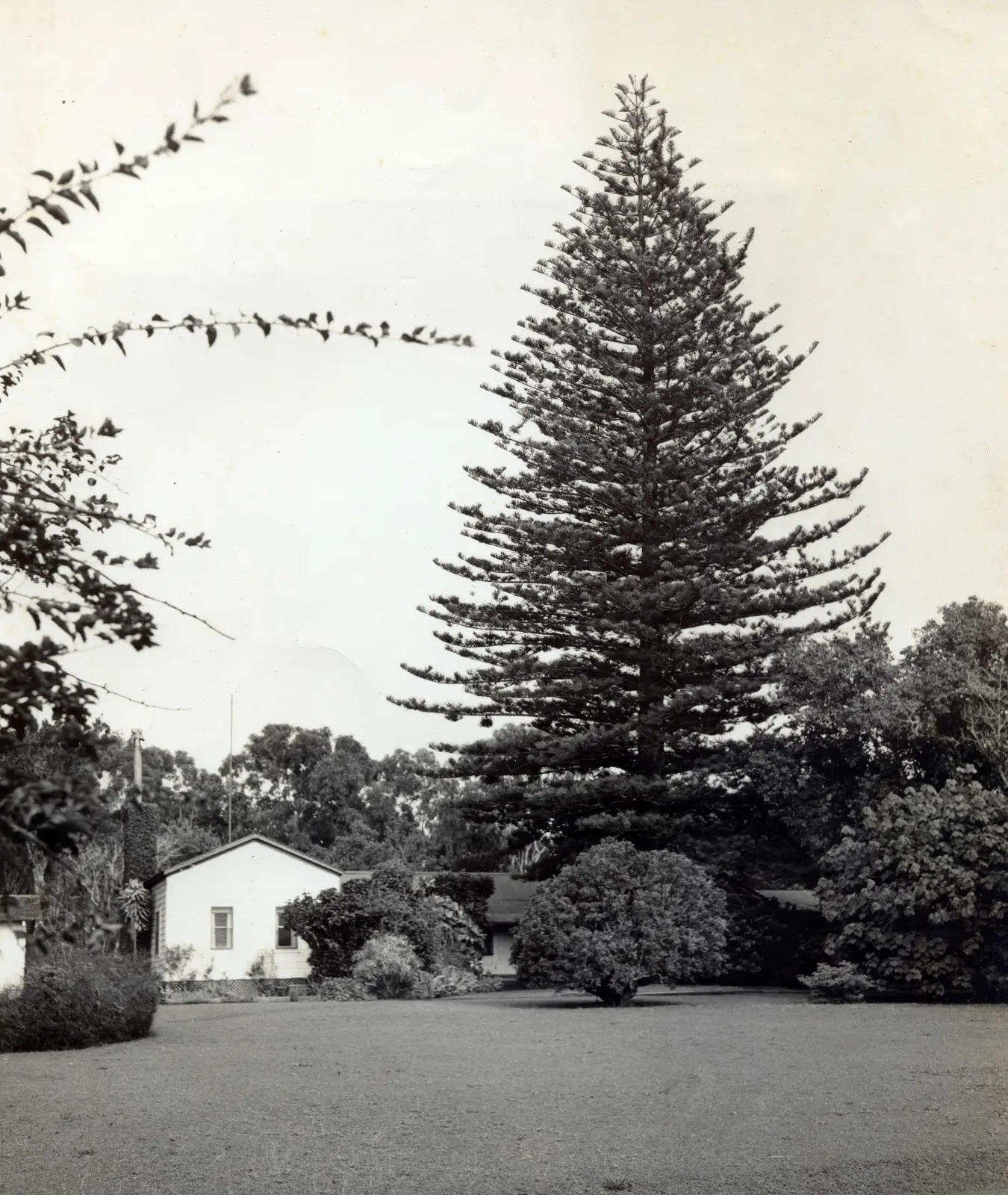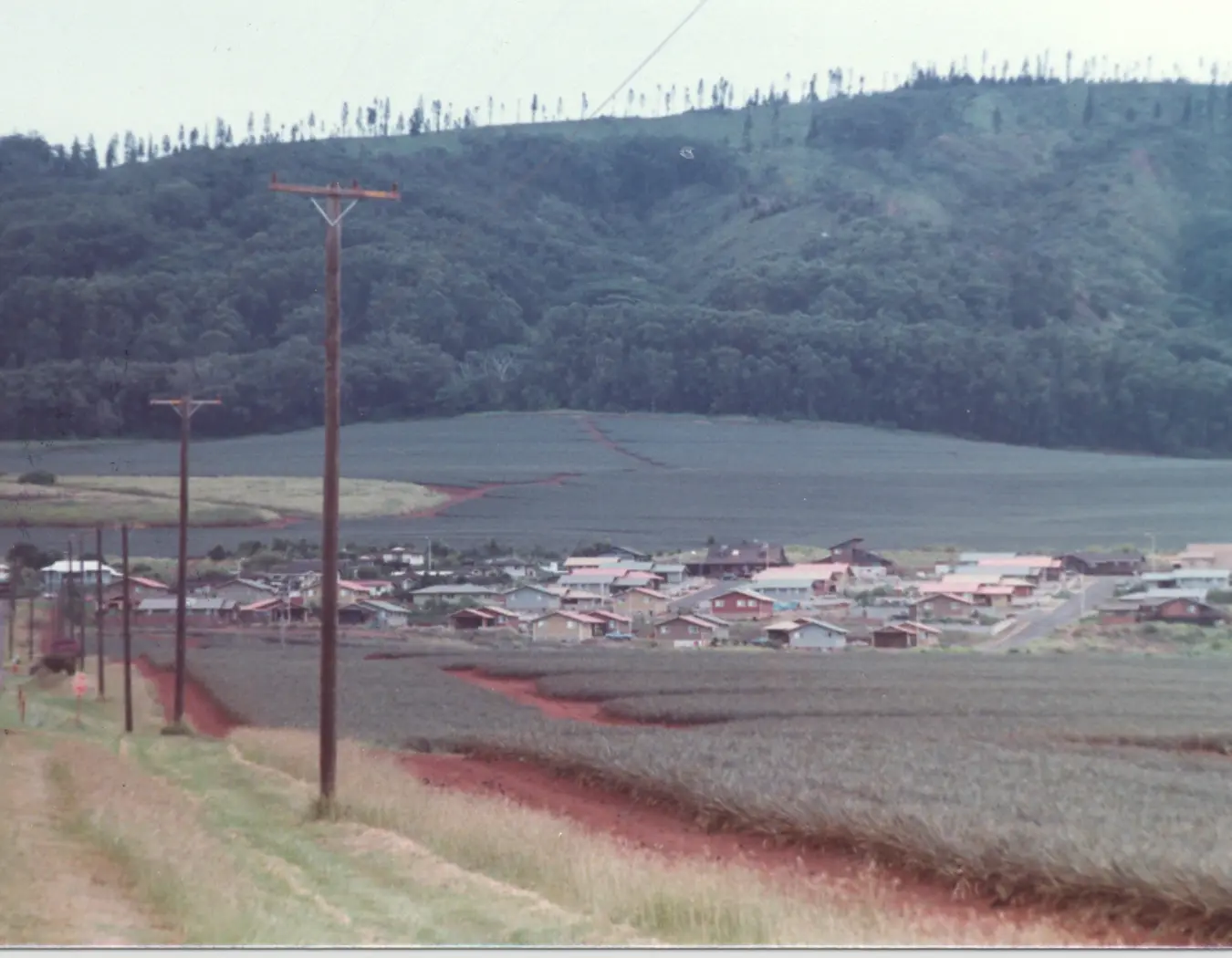Virtual Exhibit
Changing
Landscapes
on Lāna‘i
Curator
Lāna’i Culture & Heritage Center
The Lāna‘i We Know
Lāna‘i’s landscape reflects the dynamic relationship of people and place. Native Hawaiians thrived on Lāna‘i. They lived sustainably for hundreds of years and were expert at living within the wealth and limitation of their natural environment.
Their physical impact on the landscape remain visible today such as heiau, sites of ceremonial and spiritual significance, and loko i‘a, fishponds. However, majority of the island’s landscape changes occurred with Western contact in Hawai‘i in which foreigners altered the land to leverage resources for economic gain. Modern economic industries such as ranching, pineapple and tourism have left lasting impacts on the island’s landscape. From Mauka to Makai: Changing Landscapes on Lāna‘i invites you on a journey to explore Lāna‘i’s past to better understand the Lāna‘i we see today.
Ko‘ele
Kō‘ele was once a bustling community and the hub of the island’s ranching operations. Kō‘ele was the major upland community in Lāna‘i’s modern history. Though not as famous as the pineapple plantation era, ranching was the island’s longest-run economic industry. Formal ranching operations ran from about 1854 to 1951. Grazing animals such as sheep and cattle impacted the native landscape.
Lāna‘i City
Lāna‘i City was developed after James Dole purchased the island in 1922. To support the growing pineapple industry for the island, plans for building the town were created in early 1923. A native of Connecticut, Dole modeled the town’s design off of the New England’s town square concept in which a central park was surrounded by connected streets laid out in a grid pattern. Many of the buildings constructed around Dole Park during this time remain and are frequented by locals today. Pine Isle Market, for example, was first used as quarters for single men, later served as the Plantation Bakery, and then a Mer-Mart before Pine Isle opened in 1951.
Pineapple Fields
The pineapple plantation era on Lāna‘i lasted for 70 years. At its peak, the island was home to the largest pineapple plantation in the world, with nearly 20,000 acres in cultivation. This forever changed the island’s landscape with many of the field outlines and black plastic mulch paper still visible today. The rise of the industry also prompted an influx of those looking for work and better lives. Workers came from all over the world, including from the Philippines, Japan, Korea, China, and Puerto Rico. The multicultural society and the tight-knit community that was formed during this time is an important legacy for our island community.
Hulopo‘e
A beloved place of Lāna‘i people, Hulopo‘e holds many memories for those who have grown up and lived on the island. The paving of the road made this beach much more accessible. Before hotel construction began in the late 1980s, the land above Hulopo‘e Bay was clear from any buildings. The large swimming pond along the rocky coastline known as Keiki Pond is a man-made feature, created by plantation workers during the 1951 strike as a wading pool. Hulopo‘e is a wahi pana (storied place) on Lāna‘i and is worthy of respect and care. The Hulopo‘e-Mānele region is also designated as a protected marine conservation site and is home to one of the largest native ‘ua‘u kani (wedge-tailed shearwater) populations in the islands.
Manele
Mānele was home to a thriving Hawaiian community in ancient times. Remains of rock wall house foundations and a heiau are visible today. After Western contact, Mānele was utilized as a regular landing site for interisland steamers throughout the 1800s with remnants from the original breakwater could still be seen in 1950. In 1920, “Pipi Chute” was constructed along the cliffs to support interisland shipment of Lāna‘i cattle.
Kaumālapa‘u
Kaumālapa‘u was developed as a harbor after James Dole purchased the island in 1922. In order for plantation operations to be viable, a port was needed to export large loads of harvested pineapple and import supplies to sustain the new community in Lāna‘i City. While other locations were considered, it was ultimately decided that Kaumālapa‘u would be the harbor location. At one time, the harbor community inlcuded homes and a restaurant. Today, the harbor still serves as an important lifeline.
Keōmoku
Keōmoku served as the hub of residency and commerce on Lāna‘i between 1899 and the 1920s. Interisland travel between Keōmoku and Lāhaina was common during this time. Frederick and Talula Gibson Hayselden developed the short-lived Maunalei Sugar Company that ran from 1899 to 1901. The plantation established a large community with houses, stores, an inn, a sugar mill and hospital. Eight hundred people were employed, mostly of Japanese descent. Others included Hawaiian, Chinese, and Portuguese at Keōmoku. By the 1930s, most of Keōmoku’s village population had moved to Lāna‘i’s uplands. Remains of the bustling community of Keōmoku are evident with the Ka Lanakila Church, which Lāna‘i CHC helped to restore in 2010, the Lāna‘i-Lāhaina boat, a bread oven, and the Maunalei Sugar Company mill site.
The Biocultural Landscape
Lāna‘i has changed in modern history. While Keōmoku and Kaumālapa‘u no longer are inhabited, places such as Mānele Harbor and Lāna‘i City have continued to grow. The common thread amongst all of these communities is honuaola or the biocultural landscape. The last 200 yeras have been scarred by environmental degradation of land and seas. Introduced animals like deer and mouflon sheep continue to ravage the landscape. Native plants only exist in pockets amongst countless invasive plant species, which grow unihibited.
Modern economic industries like ranching and pineapple production have contributed to the deterioration of our natural environment, but there is still hope for us to restore health to our beloved ‘āina. This exhibit showcases the ever evolving and dynamic relationship between people and place. We hope this exhibit creates a dialogue between the past and present in order to create an informed, bright future for Lāna‘i.
Lāna‘i Culture & Heritage Center is dedicated to ensuring our island is cared for so that future generations can enjoy a thriving landscape and community.
Help Us Preserve Our Past
Lāna‘i has changed much in the last 200 years and continues to evolve. While all of these changes are certainly part of our Lāna‘i today, we believe we must know that past in order to create a better future for our community and our island. Our motto: Honoring the Past, Enriching the Future encompasses this goal.
This virtual exhibit is part of the “Our Living History: Lāna‘i Digital Archive” project. We have diligently worked with our archivist to organize and continue digitization of our collections, and this exhibit is a product of our continued commitment to making our history accessible.
Those with Lāna‘i photos are encouraged to share them with us.














































